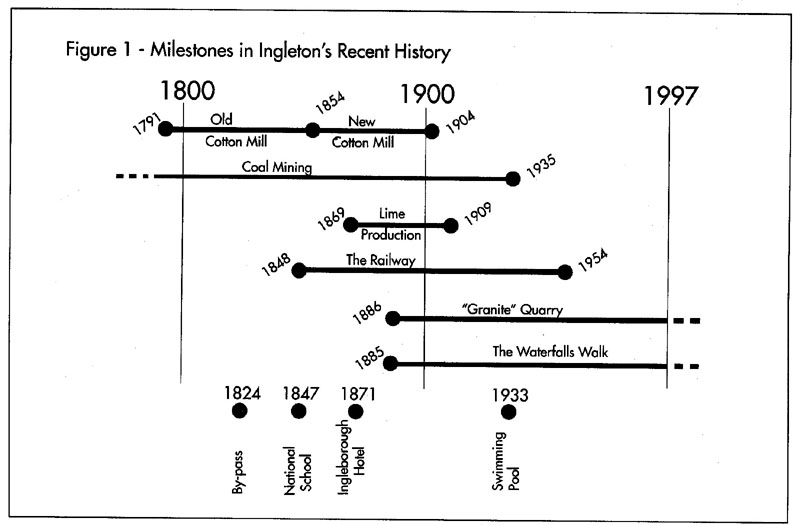| JOURNAL 1998 |
| North Craven Heritage Trust |
Meeting Place - Ingleton
Roger Neale planned this walk at 5 days notice. He deputised for Brenda Capstick, who was hospitalised at the time and later died, see obituary page 24.
Although Roger proclaimed that he was not a historian, he provided a group of some 22 members with a very vivid illustrated walk around Ingleton, demonstrating the changes to the village by reference to photographs of Old Ingleton. The walk started in the grounds of the Community Centre, formerly the site of the railway station and sidings. Despite the inter-company rivalry of Midland & London North Western, which resulted in the viaduct joining them being virtually unused, the railway was exceedingly busy and at times in the 1880s caused the tourist capacity of the village to be stretched to the limit.
He outlined the main elements in the activity of the village (coal, lime, 'granite', cotton, tanning, and tourism) and demonstrated graphically how the village adapted to the changes. We then toured the village to look for the visible remains of these activities, as well as to see other buildings of note.
Past industry was evident at the site of the tannery and at the former mill near Bridge Guest House and we were able to follow a riverside path along its former leat to the swimming pool. This also provided a view of Meal Bank Quarry and the Hoffman Kiln.
In the centre of the village we were shown Bell Horse Gate on the steep descent of the old packhorse road, replaced by an early 'by-pass' at lower level in 1824. Among the older buildings we saw Bank Hall (dated 1765), Seed Hill (a 16c yeoman's house with its Yorkshire window), Ingleborough Nursing Home (a former hotel) and the Literary Institute - and much else besides. There was a living link with the stories we were hearing, as one of our members could point out her mother and mother's sister on one of the photographs, as well as telling us that her father was one of the former miners who helped in the construction of the Swimming Pool.
Access into the Church had been arranged, and we were able to study its remarkable Norman font and to hear about its chequered history.
At the end of a most informative evening, and having heard the stories of the three hostelries, there was the opportunity to pursue studies of the interior of one of them.
Harold Foxcroft

J1998p10_19_files/tmpA57-11.jpg